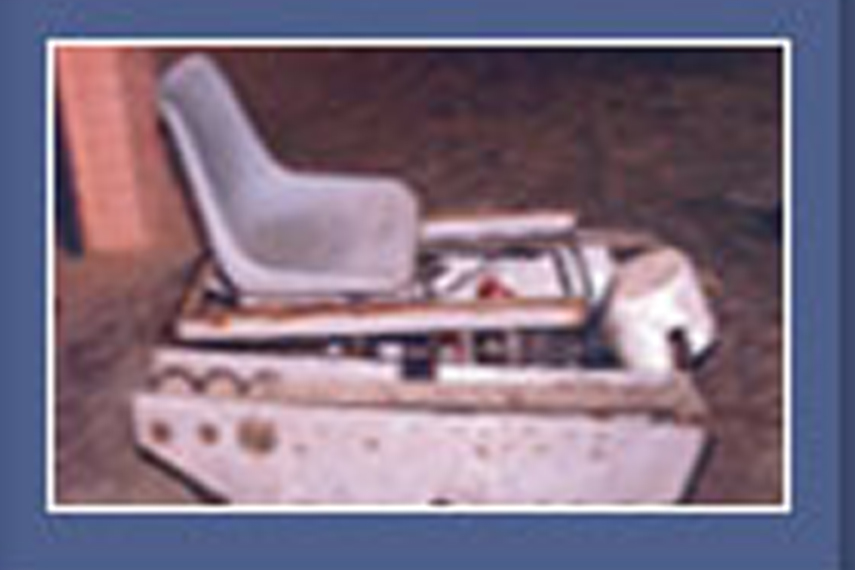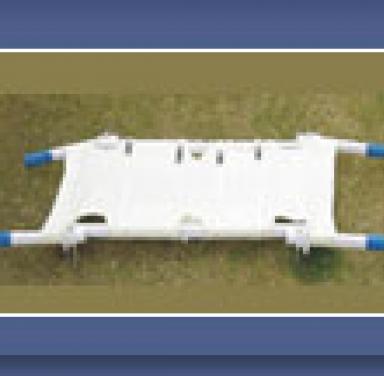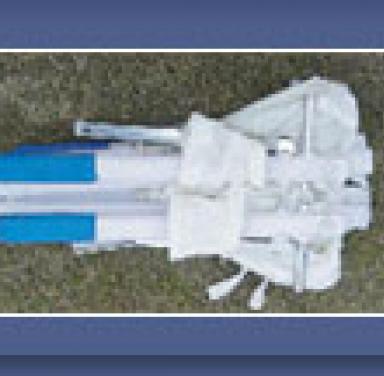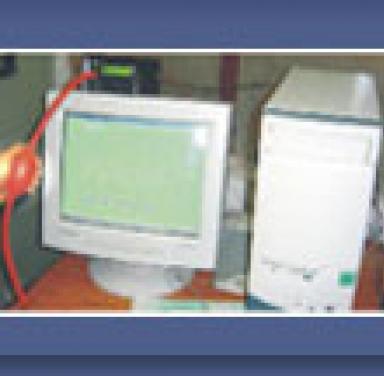
Biomedical Devices For External Use
Obstacle Climbing Chair
Patients with paralysis from waist-down are unable to stand and walk, and require a wheel chair propelled either by an attendant or their own hands. But it is very difficult to carry wheel chair across staircase, thus posing a severe limitation on their general mobility. Obstacle climbing chair (OCC) is an important rehabilitation device, particularly in paraplegia, as it provides valuable freedom of mobility to the disabled.DRDO has developed a prototype of a battery-driven microprocessor controlled OCC that can climb 11 cm stairs at 45o incline.
Lightweight Foldable Stretcher
The conventional stretcher is quite heavy, weighing more than 10 kg, and poses problem during transportation and when quick evacuation of the injured is needed. A foldable stretcher weighing 6.6 kg has been developed that can also be carried as a backpack. It is made of a new material (composite alloy and a special fabric) and can carry 120 kg on any terrain. The stretcher has been appreciated by Director General, Armed Forces Medical Services, who is now coordinating user trials.
Mechanical Hand Dynamometer
It is often required to assess the hand grip/muscle power of the hand quantitatively. DRDO has developed a dynamometer apparatus based on compressed air technology. The system is connected to a computer where the data can be stored and retrieved in the form of various parameters. The device will find applications as a physiotherapy device, and as an objective method to assess benefits of a surgery done on the hand, apart from its use in defining the hand-grip power of an individual.
ITAD Devices
Two simple devices have been developed by DRDO for inhalation therapy for Alveolar deposition (ITAD). These devices, called Anukool I & II, are based on aerosol re-entry or spacer principle and are meant for assisting treatment of pulmonary hypertension (which causes or complicates acute mountain sickness, high altitude pulmonary odema and hypoxic hypoxemia), bronchial asthma, chronic obstructive airway disease and interstitial lung disease. Anukool I is indicated in mildly breathless patients, while Anukool II is for severely breathless or unconscious patients. Both ITAD assemblies are very cheap. Response rate of over 90 per cent in high altitude hypoxemia and over 70 per cent in chronic obstructive airway disease and pulmonary hypertension has been achieved till now in 190 patients. User trials are underway in collaboration with the army, ITBP and several specialist hospitals of Delhi.
RF Coils for MRI Imaging
The image quality of MRI, determined by signal-to-background noise and spatial resolution, is dependent upon the type of RF coil used. DRDO has developed RF coils for the thyroid and the breast keeping in view the anthropometrical factors of Indian population. These cost just a fraction of the commercially available devices. DRDO has also gained expertise in developing different types of RF coils for other user-specific applications.





